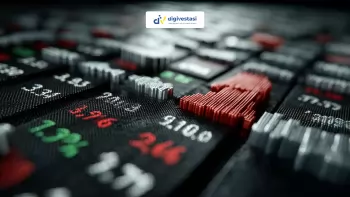
Saham News
Foreign Investors Quietly Buy These 10 Stocks - Check the List!
/index.php
Bisnis | Ekonomi - Posted on 11 July 2025 Reading time 5 minutes

Arief Anshory Yusuf, a member of Indonesia’s National Economic Council and Professor at the Faculty of Economics and Business at Padjadjaran University, pointed out that signs of an economic slowdown in Indonesia have been visible for quite some time. He emphasized that the weakening trend began even before the country’s growth rate deviated from its usual annual pattern of around 5%.
As an illustration, Indonesia’s economic growth in the first quarter of 2025 stood at only 4.87%, which was significantly lower than the 5.11% growth recorded in Q1 2024.
“This economic sluggishness, or slowdown in growth, has actually been detectable for a while now,” Arief stated during the Cuap Cuap Cuan program on CNBC Indonesia, Thursday (July 10, 2025).
Unfortunately, he noted that not all policymakers believed the economy was weakening until the government finally introduced a stimulus package worth Rp 33 trillion in Q1 2025, followed by another stimulus injection of Rp 24.4 trillion in Q2 2025.
“Most of those policy responses were based on our economic slowdown analysis. At the time, many didn’t believe a slowdown was happening. But we were fully convinced,” said Arief.
He highlighted several early indicators of economic weakening even before the Q1-2025 growth numbers came out. One of the clearest signs, he said, was the increasing share of people’s spending on basic needs, as recorded in banking data.
Referring to Engel’s Law, Arief explained that when the share of expenditure on necessities rises, it indicates a growing number of low-income individuals in the population. This is because their purchasing power is only sufficient to meet daily basic needs.
“According to Engel’s Law, the poorer someone is, the higher their spending proportion on basic goods. Conversely, wealthier individuals allocate a smaller share to such needs. And the data clearly showed an increase in the proportion of spending on essentials,” Arief revealed.
Another key indicator, he continued, is the decline in real wages. Real wages are calculated by subtracting inflation from nominal income. In Indonesia, real wages have stagnated around Rp 1.5 million per month since 2016, despite nominal wages rising from Rp 1.5 million to nearly Rp 3 million by 2024.
This situation has been made worse by the consistent decline in government spending following general elections, which Arief described as a recurring trend during consolidation periods. This was reflected in the -1.38% contraction in government consumption in Q1 2025, while household consumption grew only 4.89%, showing weak consumer demand.
“When household consumption weakens and the government is slow to respond, it poses a macroeconomic risk. In macro terms, this is called pro-cyclicality—which means the government response amplifies the economic downturn instead of counteracting it,” Arief concluded.
Source: cnbcindonesia.com
What do you think about this topic? Tell us what you think. Don't forget to follow Digivestasi's Instagram, TikTok, Youtube accounts to keep you updated with the latest information about economics, finance, digital technology and digital asset investment.
DISCLAIMER
All information contained on our website is summarized from reliable sources and published in good faith and for the purpose of providing general information only. Any action taken by readers on information from this site is their own responsibility.